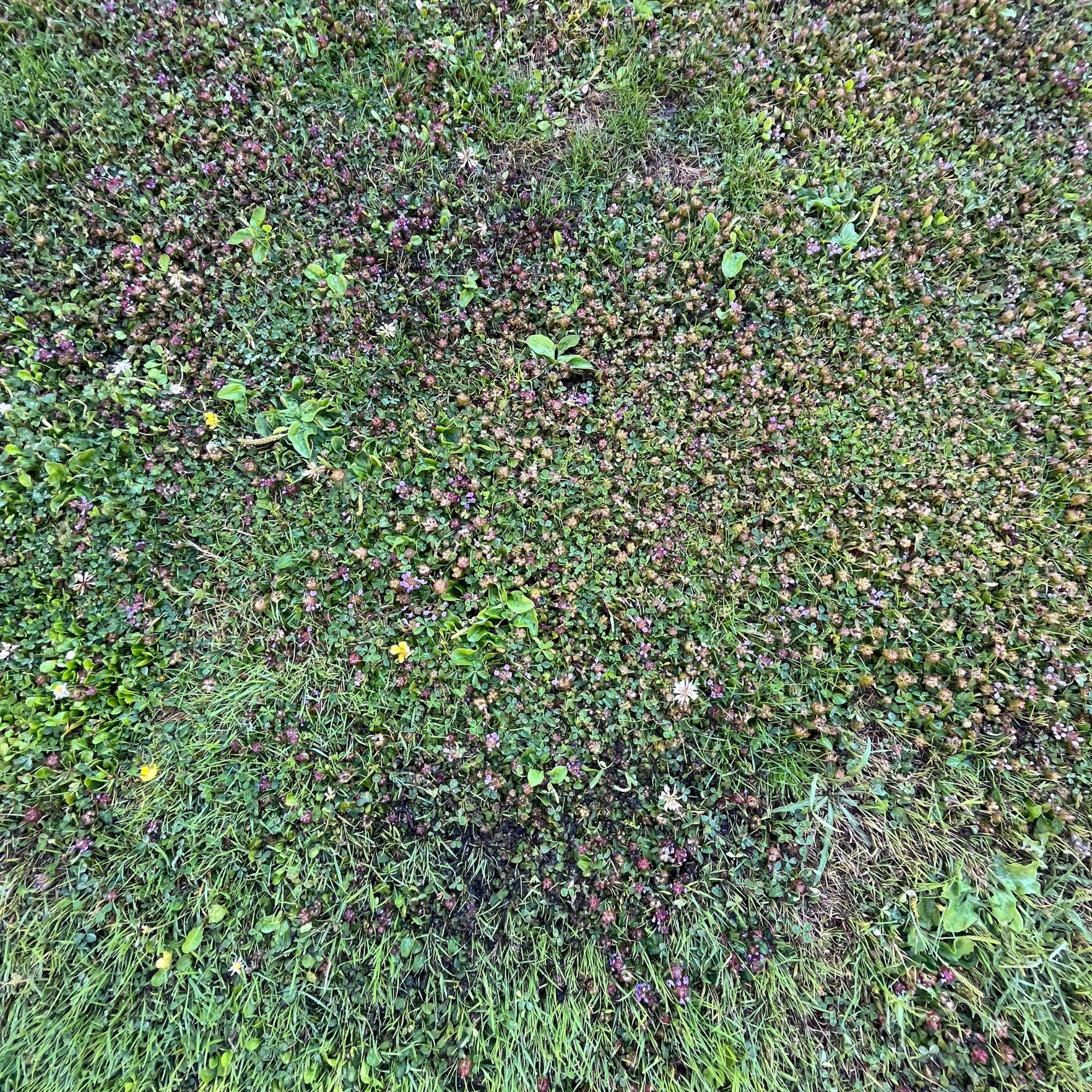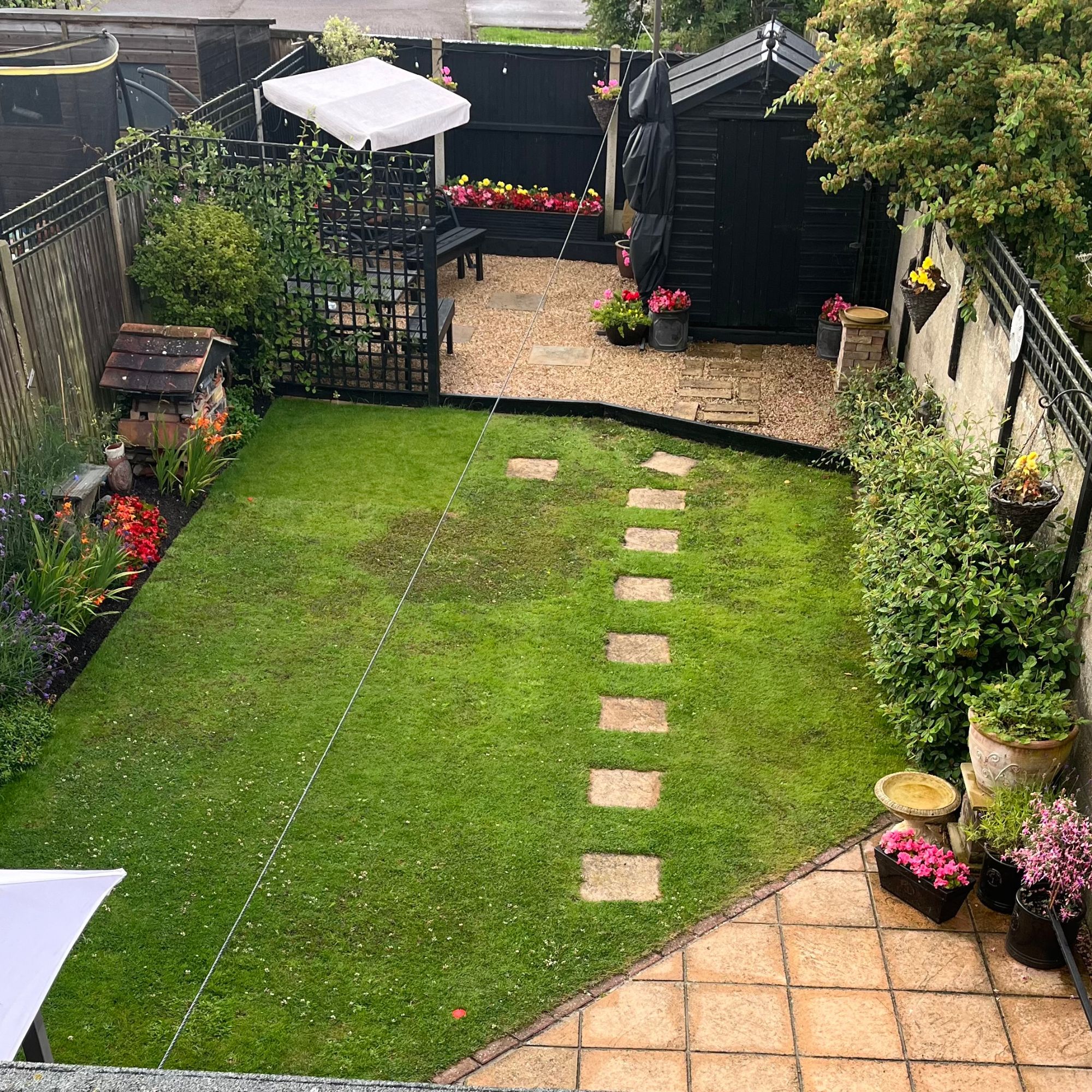How to get rid of selfheal in a lawn – 3 ways to keep the purple-flowering weed at bay
Nip it in the bud before it takes over!


Purple flowers invading your grass? It might be time to learn how to get rid of selfheal in a lawn.
Selfheal is a purple-flowering perennial weed that spreads at pace and can become a problem for lawn owners. Last year, my lawn suffered the worst selfheal infestation it’s ever seen – but luckily, with a few lawn care tips up my sleeve, I managed to transform my lawn in a few weeks.
Below, you'll find the best ways to get rid of selfheal in a lawn (as approved by lawn care experts!).
1. Mow regularly

As long as you don’t cut your grass too short, mowing your lawn regularly can help keep selfheal at bay – so it’s worth scheduling the task into your weekly lawn care calendar and investing in a good lawn mower if you haven’t already.
‘Frequent mowing weakens selfheal because it prevents the plant from flowering and setting seed,’ explains Cheryl Harper, managing director at Greensleeves Lawn Care
Don’t scalp your lawn, though – if the grass is too short, there’s more room for selfheal to take over.
‘Selfheal can be active until early autumn, so the best way to get rid of it is to keep a regular mowing schedule throughout the summer months,’ adds Chris McIlroy, lawn expert at The Grass People.
Sign up to our newsletter for style inspiration, real homes, project and garden advice and shopping know-how

Cheryl Harper is the managing director of Greensleeves Lawn Care. Established in 1998, Greensleeves Lawn Care is a UK-wide lawn care business with over 100 locations.
2. Scarify and overseed

Learning how to scarify a lawn is a must, especially if you’re dealing with a selfheal infestation. In fact, scarifying saved my lawn from its infestation, and I absolutely swear by Wolf-Garten’s Scarifying Roller Rake Head and Handle from Amazon, which did a thorough job of raking out the thatch.
In a nutshell, scarification gives your grass room to breathe and win the battle against selfheal for resources.
‘By raking out moss, thatch and any debris in spring or autumn, you give your grass more breathing space and reduce the areas where selfheal can settle,’ explains Cheryl.
You’ll need to follow up by overseeding your lawn, though.
‘After scarifying, it’s a good idea to overseed any thin patches to encourage thick, healthy growth,’ advises Cheryl. ‘This makes it harder for weeds to sneak in.’
Pronto’s Super Speedy Grass Seed is Amazon’s Choice for lawn seed.
3. Weed and feed

If selfheal has already taken hold of your lawn and the spread is extensive, it’s worth thinking about a garden-friendly herbicide.
‘If your garden is struggling with a large infestation, some herbicides can target the weed without damaging your grass,’ says Chris. ‘Look for a fertiliser that combines both weed killer and a feed if you’re unsure and want to avoid harming your lawn.
I used Westland Aftercut Lawn Feed, Weed and Moss Killer from Amazon, which killed the selfheal while giving my grass a much-needed nutrient boost.
Selfheal doesn’t have to spell disaster for your lawn, and there are ways to limit the spread. If you’re thinking about getting rid of clover in a lawn, there are ways around that, too – but a few patches here and there are great for pollinators.

Sophie joined the Ideal Home team as Gardens Editor in June 2024. After studying English at Royal Holloway, University of London, she began writing for Grow Your Own, which spurred on her love of gardening. She's tried growing almost every vegetable under the sun, and has a soft spot for roses and dinnerplate dahlias.
As Gardens Editor, Sophie's always on the lookout for the latest garden trend. She loves sharing growing hacks for every space, from herbaceous borders to balconies.